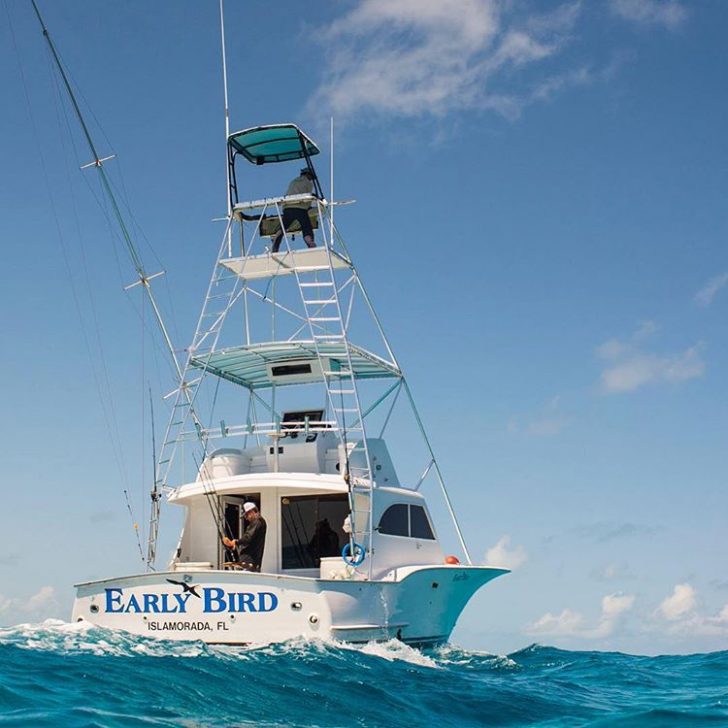Drop everything you’re doing right now. Go book a mahi trip out of the Upper Keys. Capt. Ross Early with Early Bird Fishing Charters said they are hammering dolphinfish right now, with piles of schoolie-sized mahi packed in around the weed lines and big gaffers and slammers showing up under the birds.
Summertime is all about mahi off the Atlantic side of Key Largo. Really, the bite stretches all the way south through the Keys, but it’s hard to beat Largo down through Islamorada for ease of access. The Upper Keys are close enough for a day trip from the South Florida mainland.
Capt. Ross said the bite usually ramps up in May and lasts into September or October most years as the mahi migrate down through the Keys. A typical day begins early, with a quick stop inside the reef line to catch bait with a net or sabiki before heading offshore with a tank full of cigar minnows and ballyhoo.
The destination is the weed line that drifts in the current offshore. Capt. Ross said the run to the fishing grounds can be as short as 8 miles, and he fishes in anywhere from 300 to 1,000 feet of water. But the depth doesn’t really matter because the fish are near the surface feeding on forage that congregates around the weeds.
He’ll start by searching, trolling with lures and dead ballyhoo to find the fish. When that first rod goes down is when the real action starts. It’s a scramble to clear all the trolling lines because that first fish typically brings other fish with it. Everyone on deck grabs a 20-pound spinning outfit to pitch chunk bonita, squid, live baits, or whatever to the dolphin that are schooled up and feeding.
“It can become organized chaos,” Ross said. “There are fish all around the boat, and you want to catch as many as you can, while you can because it can turn off as fast as it turned on.”
Generally, this blast of action consists of 6- to 10-pound schoolie-sized mahi with fillets perfect for the dinner plate. The 40- and 50-pound slammers are a little more solitary.
“I’m always on the binoculars looking for birds,” Ross said. “I’m looking for frigates and yellow-billed terns. They’re our eye in the sky.”
Three or four birds in one spot hovering or picking at the weeds indicate there are fish below pushing bait to the surface. Capt. Ross will climb into the tower of his 45-foot Custom Carolina, Early Bird, to look for fish and steer the boat on a collision course with them. Packs of three or four big mahi will be moving southwesterly this time of year, and the trick is to get out in front of them.
With Ross spotting fish and shouting direction to the anglers below, casting live baits accurately will 
Book your trip with Capt. Ross Early and Early Bird Fishing Charters by calling 305-942-3618 or emailing ross@fishearlybird.com. Check out their website at www.fishearlybird.com.
